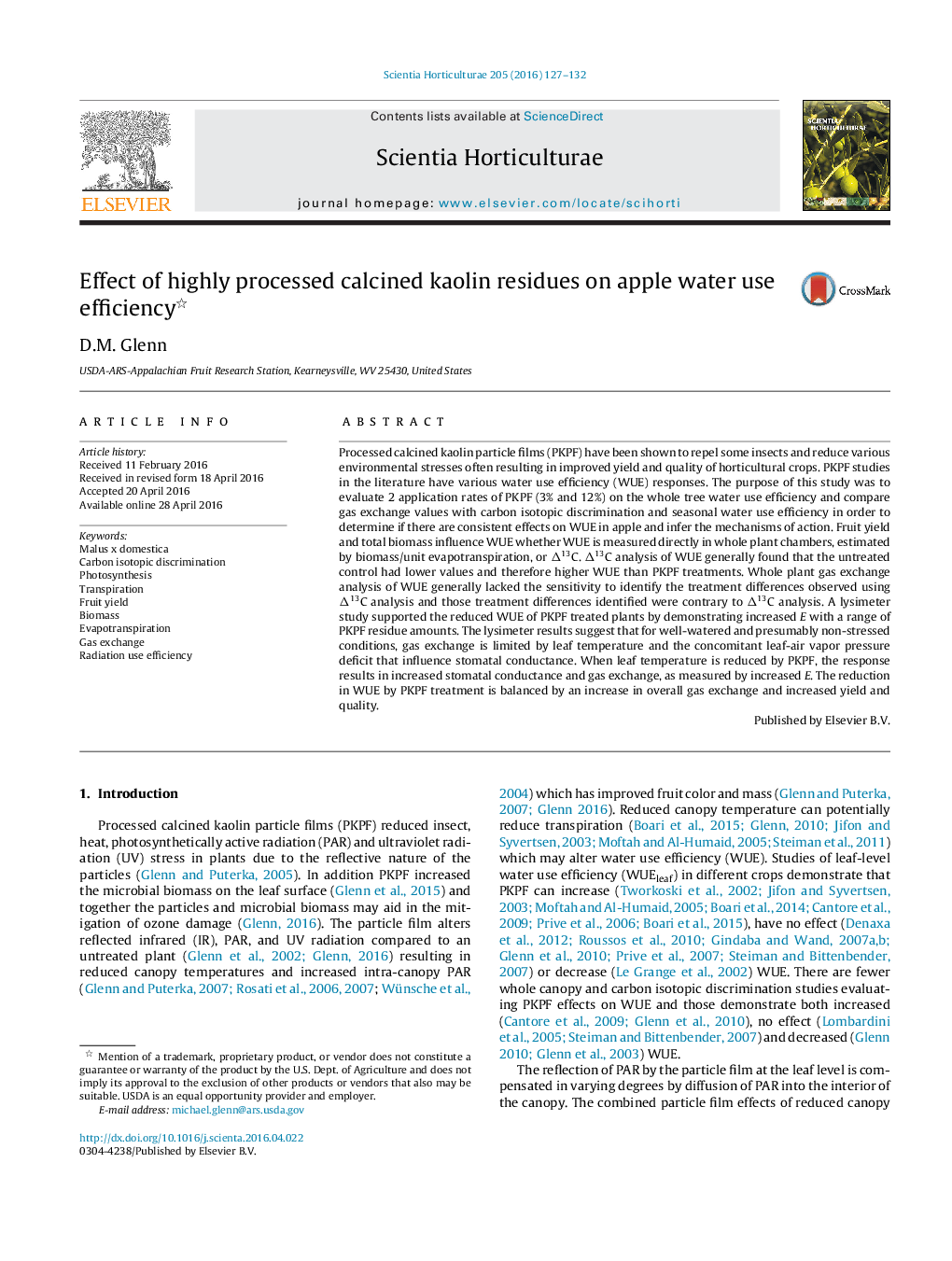| Article ID | Journal | Published Year | Pages | File Type |
|---|---|---|---|---|
| 4566046 | Scientia Horticulturae | 2016 | 6 Pages |
Abstract
Processed calcined kaolin particle films (PKPF) have been shown to repel some insects and reduce various environmental stresses often resulting in improved yield and quality of horticultural crops. PKPF studies in the literature have various water use efficiency (WUE) responses. The purpose of this study was to evaluate 2 application rates of PKPF (3% and 12%) on the whole tree water use efficiency and compare gas exchange values with carbon isotopic discrimination and seasonal water use efficiency in order to determine if there are consistent effects on WUE in apple and infer the mechanisms of action. Fruit yield and total biomass influence WUE whether WUE is measured directly in whole plant chambers, estimated by biomass/unit evapotranspiration, or Î13C. Î13C analysis of WUE generally found that the untreated control had lower values and therefore higher WUE than PKPF treatments. Whole plant gas exchange analysis of WUE generally lacked the sensitivity to identify the treatment differences observed using Î13C analysis and those treatment differences identified were contrary to Î13C analysis. A lysimeter study supported the reduced WUE of PKPF treated plants by demonstrating increased E with a range of PKPF residue amounts. The lysimeter results suggest that for well-watered and presumably non-stressed conditions, gas exchange is limited by leaf temperature and the concomitant leaf-air vapor pressure deficit that influence stomatal conductance. When leaf temperature is reduced by PKPF, the response results in increased stomatal conductance and gas exchange, as measured by increased E. The reduction in WUE by PKPF treatment is balanced by an increase in overall gas exchange and increased yield and quality.
Keywords
Related Topics
Life Sciences
Agricultural and Biological Sciences
Horticulture
Authors
D.M. Glenn,
